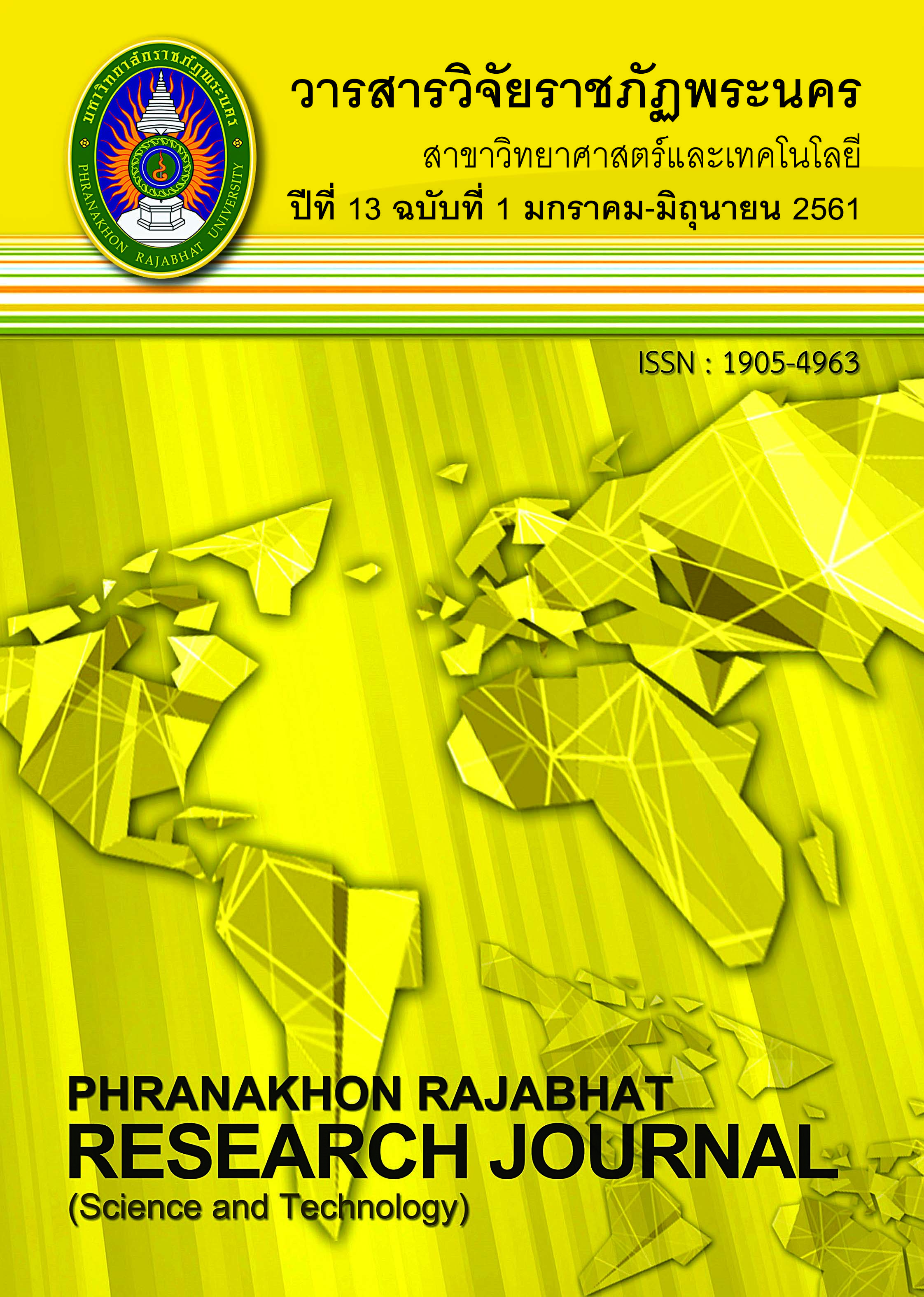การศึกษาการเคลื่อนที่ของแท่งแม่เหล็กผ่านการจัดเรียงแม่เหล็ก แบบฮอลแบ็ค
Keywords:
Halbach array, permanent magnets, MaglevAbstract
The purpose of this research is to study and construct the motion of magnet experiment by Halbach array. We studied the principles and how to array the magnetic bars to be Halbach array by The testlameter was used for measuring the magnetic pole and putting magnetic bar to be the set of Halbach array. We construct the set of magnetic bar to be Halbach array by making the one side of magnetic set to have most of magnetic feld intensity as the other side having . There were 2 couple sets of magnetic arrangement that set up in proper angle and distance so the magnet bar can move through the track. We found that our Halbach array can make the best average speed at 2.20 m/s as the frst Halbach array set on the tracks with angle 50 and second Halbach array set with angle 100.
References
Peerapat, C.(2015). Maglev. Retrieved February 28, 2017, from https://www.nextwider.com/ 2015/04/22/japan-maglev-train.
Kraison, U. (2012). Electromagnetic compatibility : EMC. Technology Promotion Association (Thailand-Japan). 38(220), 40-44.
Klaus, H. (1980). Design of permanent multipole magnets with oriented rare earth cobalt material. Nuclear Instruments and Methods. 169 (1), 1–10.
Klaus, H. (1985). Application of permanent magnets in accelerators and electron storage rings. Journal of Applied Physics. 57, 3605.
Mallinson, J.C. (973). One-sided fluxes — A magnetic curiosity?, IEEE Transactions on Magnetics. 9, 678-682.
Downloads
Published
Issue
Section
License
โปรดกรอกเอกสารและลงนาม "หนังสือรับรองให้ตีพิมพ์บทความในวารสารวิจัยมหาวิทยาลัยราชภัฏพระนคร สาขาวิทยาศาสตร์และเทคโนโลยี" ก่อนการตีพิมพ์



